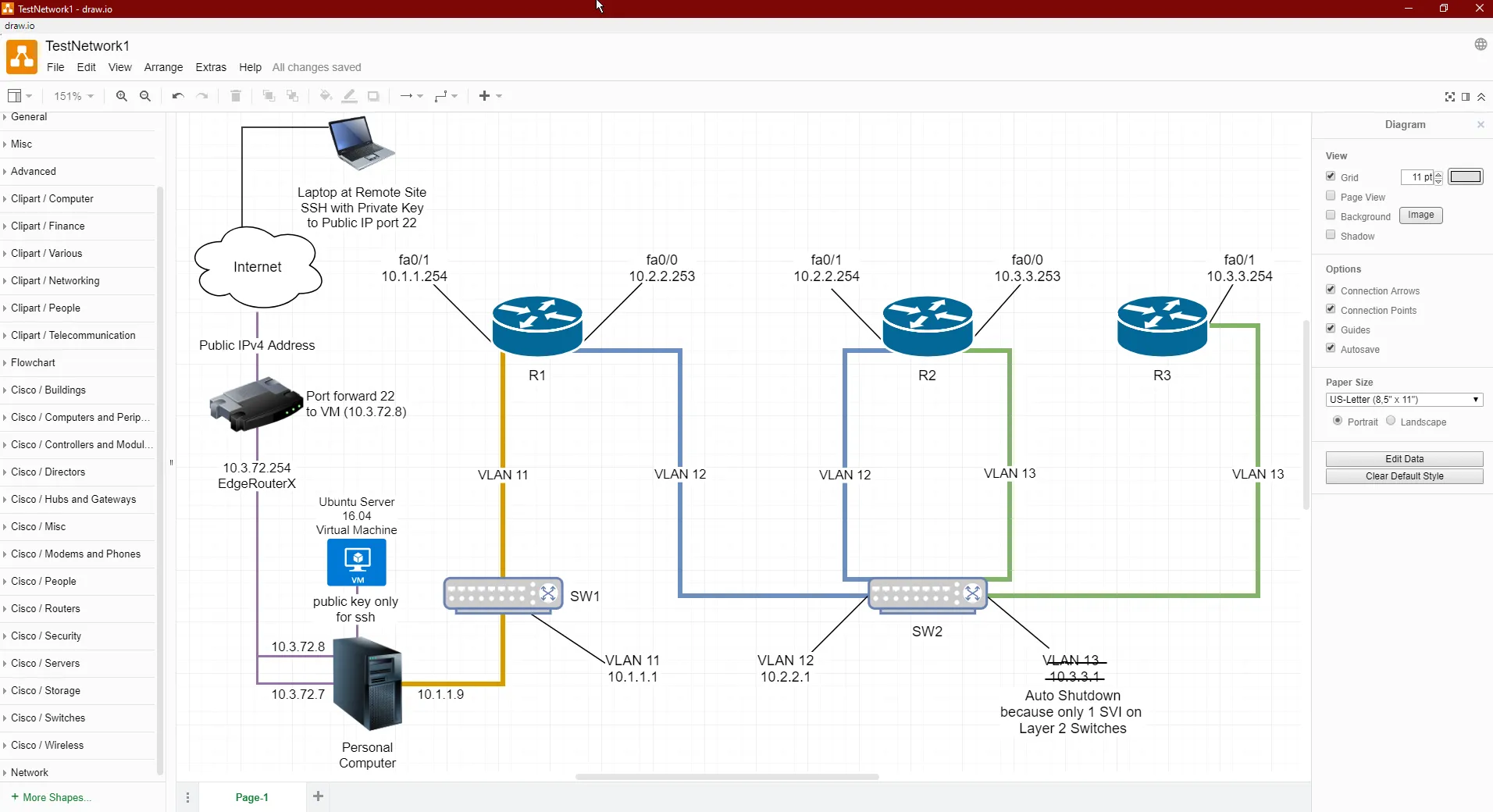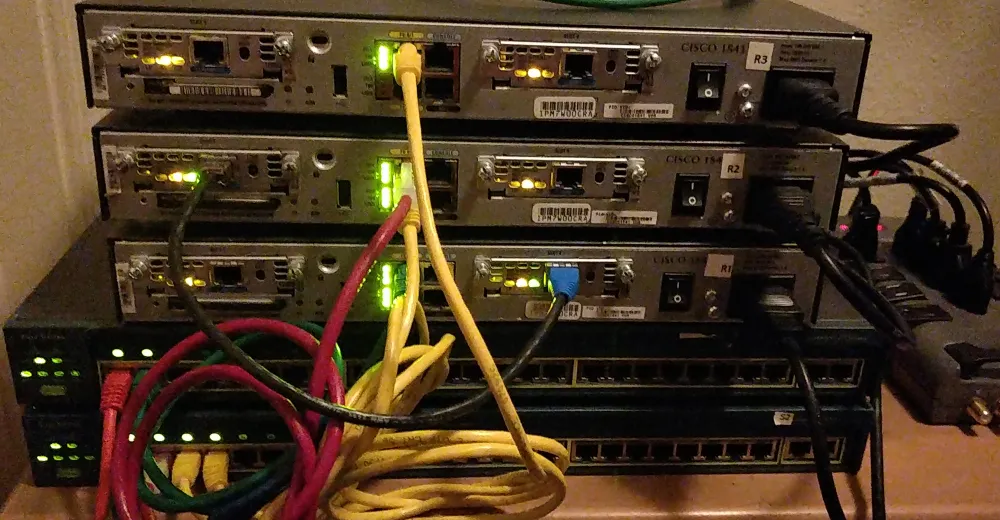Cisco Hardware Lab Setup V1
I was able to buy the cisco hardware from a coworker for a good price. I also got a RJ45 to Serial Console Cable along with a USB to Serial. Along with some ethernet cables. I got the hardware setup was playing with it for a bit figuring out how to make it work. I did find out that old equipment doesn’t have Auto-MDIX. Which enables you to plug in straight through or crossover ethernet cables without having to plan out which one you use. I don’t have any crossover cables and I don’t have any tools to make my own. However, I thought of using VLANs on the switches to connect the routers together. I drew up a quick map on how I could connect everything together, while still making it virtually separated. After configuring the VLANs, SVIs, and IPs. Since windows was sending my traffic for 10.2.2.0/24 and 10.3.3.0/24 out of my regular network 10.3.72.0/22. Instead of out of the 10.1.1.0/24 network. I also had to figure out how to do Static Routes in Windows. Since EIGRP routing information isn’t passed to a PC. I was able to get that working on my windows machine with these commands.
route ADD 10.2.2.0 MASK 255.255.255.0 10.1.1.254
route ADD 10.3.3.0 MASK 255.255.255.0 10.1.1.254Though these weren’t the first. Since I didn’t know the syntax correctly. I was sending the traffic to the interface’s IP as if it was the gateway. Instead of sending it to the Gateway Router that could handle the rest. Now the pings are working, and I can SSH into everything using PuTTY. However, I wanted to be able to work on it remotely at my job when I have downtime. I’ll connect with SSH to my Ubuntu VM. I have a Public Key on the Ubuntu VM and a private key stored in my KeePass on my laptop.
Since the virtual machine doesn’t route through windows, it has own routing table. I just added the static route in Linux with these commands.
sudo ip route add 10.2.2.0/24 via 10.1.1.254
sudo ip route add 10.3.3.0/24 via 10.1.1.254I encountered more errors when trying to SSH to the cisco equipment from my Linux machine. This is due to extra security being turned on by default that doesn’t allow old methods to be used. Here are some of the errors I was receiving:
Unable to negotiate with 10.1.1.254 port 22: no matching key exchange method found. Their offer: diffie-hellman-group1-sha1
Unable to negotiate with 10.1.1.254 port 22: no matching cipher found. Their offer: 3des-cbcAfter some researching. I was able to solve those errors by updating the user ssh config file. Open the file
sudo nano ~/.ssh/configThen update it with this
Host 10.1.1.254
Ciphers 3des-cbc
KexAlgorithms +diffie-hellman-group1-sha1However,then I got a different error.
ssh_dispatch_run_fatal: Connection to 10.1.1.254 port 22: Invalid key lengthIt turns out that if you don’t use a standard-length key such as 1024 or 2048 it will throw this error. I had initially set the key as 768 as it is the minimum for SSH. I did this because I didn’t want it to be slow similarly to this other equipment that I had used that barely functioned if you put a 2048 bit key on it. However, 1024 seems to be fine so far in this lab. I also mapped this out a little bit with a Free Site/Program draw.io that seems to work fine for simple diagrams. Below is a picture of the setup that I made.


I was going to go buy some cheap RJ45 Connectors and Wire Crimp Tools and then sacrifice a cable. Lucky for me some coworkers were kind enough to offer their spares they wanted to get rid of. I made some crossover cables to get everything connected. (See next post for V2)